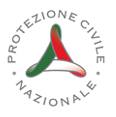ARI_RE Organizzazione, Regolamenti e Strutture




Dal 2007 nuova Struttura e Organizzazionedella Protezione Civile Nazionale
Con Decreto del Presidente Del Consiglio 23 ottobre 2006 è stata modifica l'organizzazione interna del Dipartimento dlla Protezione Civile ed abrogato il precedente Decreto del 12 dicembre 2001;
Con Decreto del Presidente del Consiglio 21 novembre 2006 è stata approvata la nuova struttura della Protezione Civile Nazionale con la costituzione del Comitato operativo della protezione civile ed abrogati i precedenti Decreti del Ministro degli Interni del 2 marzo 2002 e 28 marzo 2002. In pratica vengono delegate tutte le funzioni al Dipartimento Nazionale al posto del Ministero degli Interni e delle Prefetture.
Il 4 maggio 2007 è stato approvato a Susans (Udine) il Protocollo d'Intesa tra Dipartimento, Regioni ed Associazioni Nazionali di Volontariato che definisce i ruoli e le modalità di intervento in caso di emergenze di tipo "C". Il documento, frutto di un lungo lavoro tra i tre parteners coinvolti è un importante punto di partenza per i rapporti e la collaborazione delle Associazioni di Volontariato, di cui noi facciamo parte, e le strutture di Protezione Civile delle Regioni e Provincie autonome.
L'Associazione Radioamatori Italiani e la Colonna Mobile Nazionale ARI-RE
Il progetto Italia per la struttura denominata: Colonna Mobile Nazionale è una realtà operativa. La struttura costituisce un Gruppo rapido di intervento a disposizione del Dipartimento nazionale di Protezione Civile, per casi di emergenze di tipo "C"; Esso è composto da Radioamatori Soci ARI dislocati in tutte le Regioni e risponde a Coordinatori territoriali. Vedere da qui la struttura della Colonna Mobile Nazionale.
Linee guida operative per l'ARI-RE - Vedere Radio Rivista n. 11- 2006
A pagina 34 di Radio Rivista n. 11/2006 Alberto Barbera, IK1YLO, Coordina- tore Nazionale ARI-RE, ha indicato i criteri di attivazione della struttura in caso di allertamento per emergenze reali o per esercitazioni. Ecco la foto del 1° Raduno Nazionale del Volontariato di Protezione Civile 2006.
L'ARI e la Protezione Civile: Organizzazione e Scopi
L'A.R.I ha costituito una struttura organizzativa denominata ARI-RE - Radiocomunicazioni di Emergenza, con la quale l'Associazione può garantire la partecipazione dei propri soci radioamatori alle attività della Protezione Civile Italiana, nello specifico settore delle radiocomunicazioni alternative di emergenza nell'ambito di interventi coordinati con le autorità territorialmente competenti.
Questa struttura è costituita da Radioamatori volontari, soci dell'A.R.I., dotati di preparazione specifica, attrezzati e coordinati sotto l'aspetto tecnico-operativo, in grado di realizzare ed attivare reti autonome di comunicazione per i servizi alternativi di emergenza utilizzando tutti i moderni modi di comunicazione: (Fonia, Immagini video ATV e Digitali: PSK31, APRS, D-STAR, PACKET ecc.)
I radioamatori volontari sono tenuti a:
presentare domanda scritta di adesione alle competenti strutture di Sezione
dichiarare la disponibilità propria e di mezzi per gli interventi di necessità locale, regionale o nazionale in modo volontario
partecipare alle attività di formazione e di addestramento organizzate dai vari livelli della struttura;
Tra le attività "istituzionali" del Gruppo ARI-RE vi sono le prove di sintonia in HF (freq. diurne 7.045 kHz e 7.065 kHz; freq. notturne 3.625 - 3.647 kHz.) tra le stazioni radio predisposte in tutte le Prefetture italiane, con l'attivazione delle sotto-maglie regionali in VHF-UHF e la partecipazione a complesse esercitazioni addestrative in emergenza simulata unitamente alle altre organizzazioni di volontariato di Protezione Civile. Il Gruppo ARI-RE svolge, come attività collaterale, l'assistenza radio per garantire la sicurezza durante lo svolgimento di grandi eventi, di attività automobilistiche sportive, di manifestazioni complesse estese anche su territori vasti. Queste occasioni sono utili perché aumentano la preparazione e l'efficienza del Gruppo che si viene a trovare, così, in situazioni operative e ambientali spesso difficili e quindi molto simili a situazioni operative che si possono riscontrare nei casi di reale emergenza territoriale.


Protezione Civile e Radioamatori dell'ARI-RE
Pronto l'uso di ATV e Rete Italia WI-FI
Un impegno verso l'intera collettività. I Radioamatori dell'ARI-RE, inseriti a pieno titolo nel Volontariato di Protezione Civile, apportano il loro contributo tecnico in quelle circostanze ove le comunicazioni alternative in emergenza sono indispensabili quando per le eccezzionalità degli eventi gli Enti non riescono a garantire le necessità per le comunicazioni istituzionali .
L'ARI-RE dispone di numerosi ponti ripetitori tradizionali che coprono l'intera Regione, dispone di una rete ad elevata tecnologia per la trasmissione di immagini ATV (Amateur Television) con mezzi per postazioni sia fissi che mobili . Da poco sono anche disponibili una serie di Access Point (grazie al Progetto Rete Italia WI-FI Digitale) che, via via vengono installati in punti strategici per coprire le zone del territorio interessato. Per saperne di più si può accedere da qui alla speciale pagina dedicata al Progetto Rete Italia WI-FI













